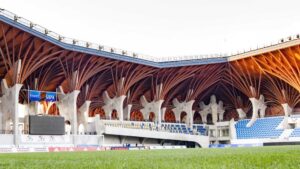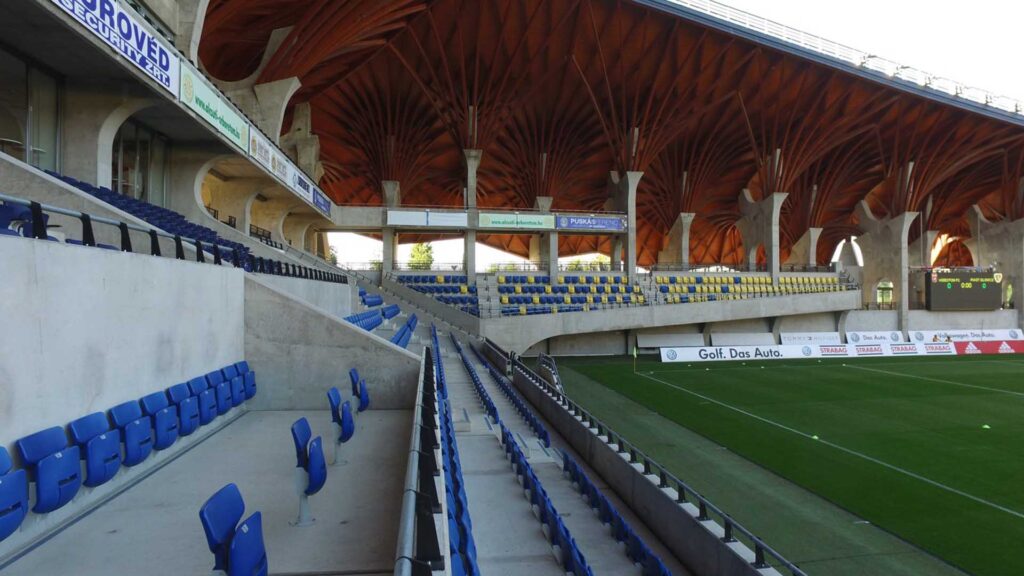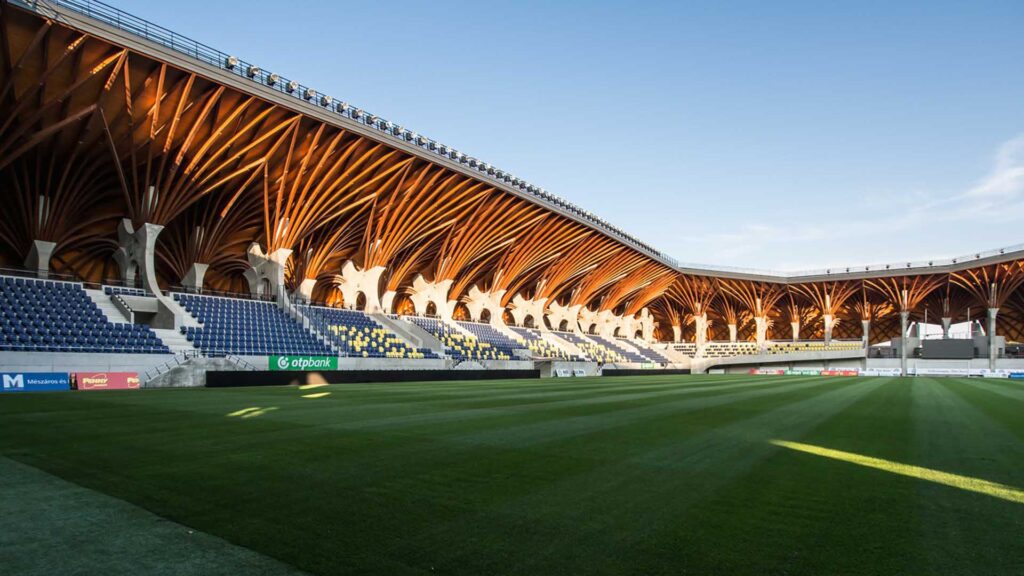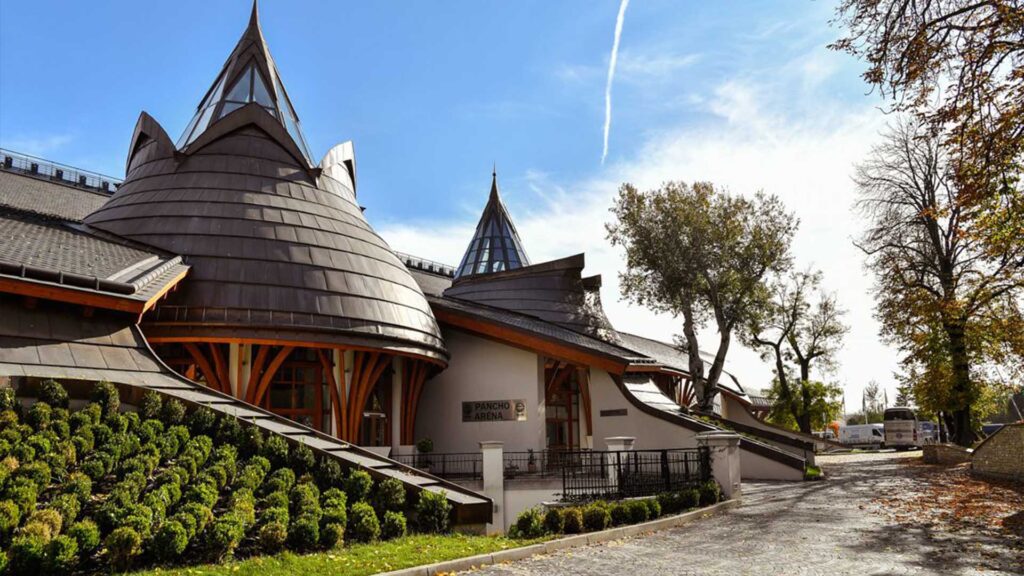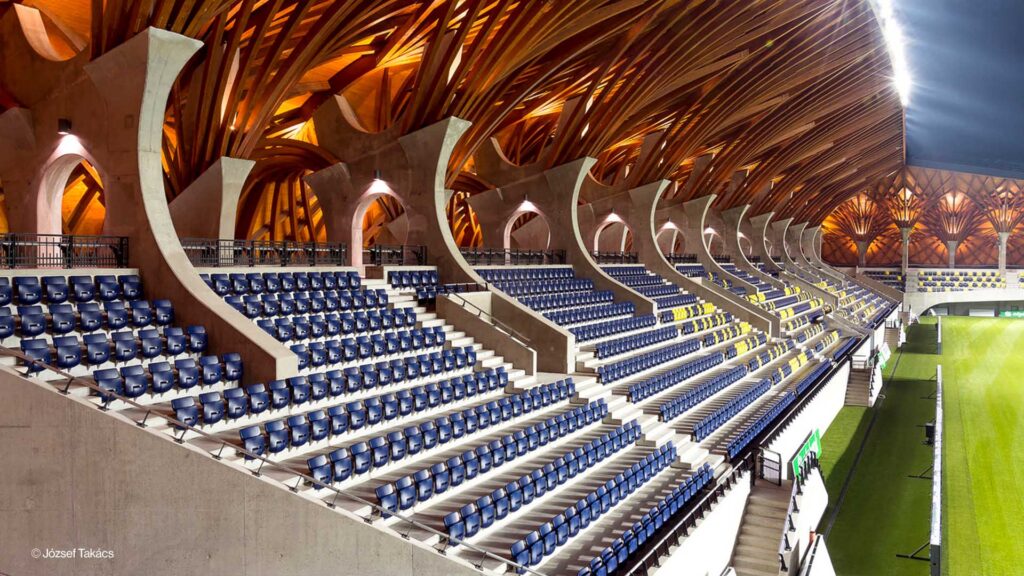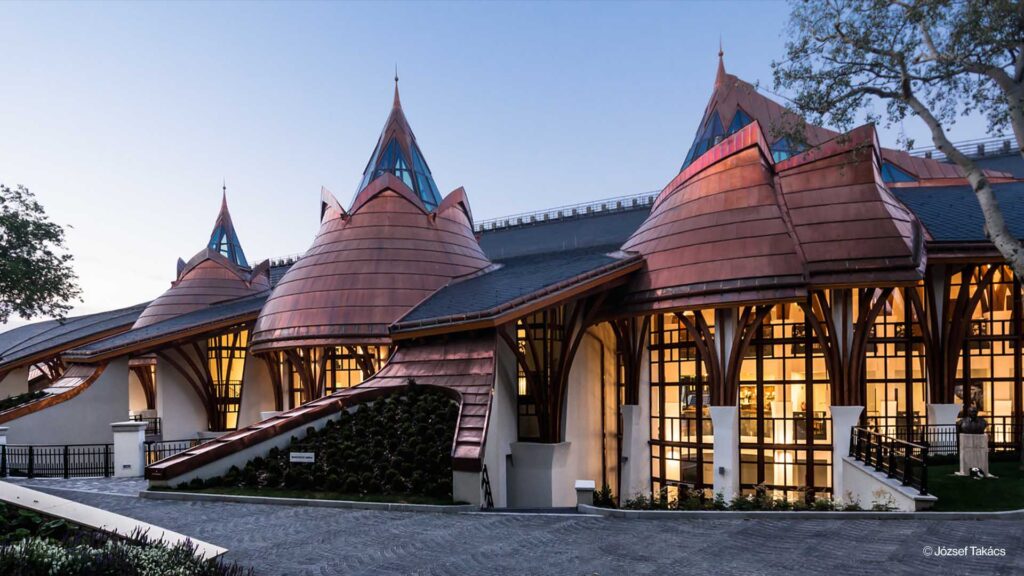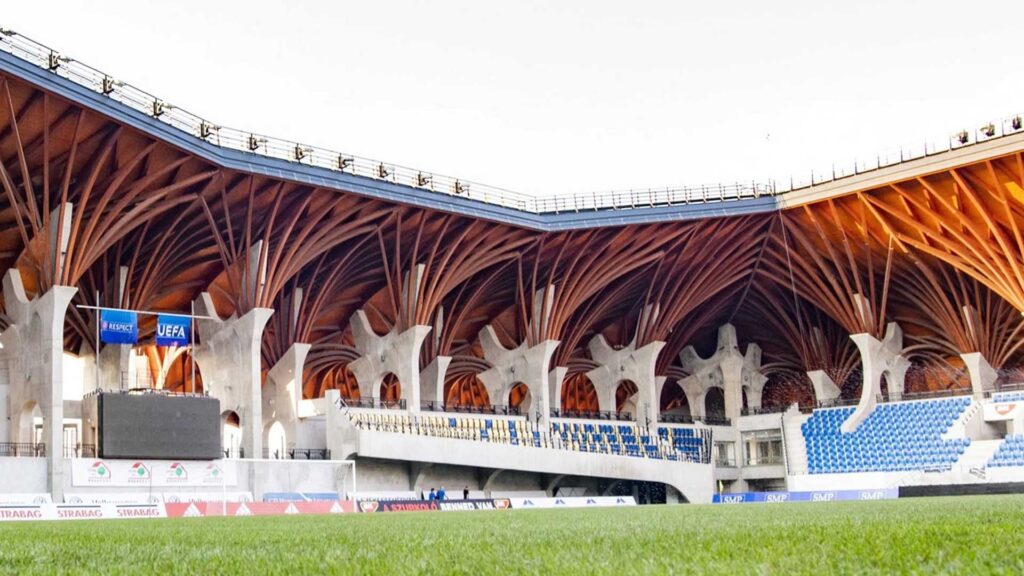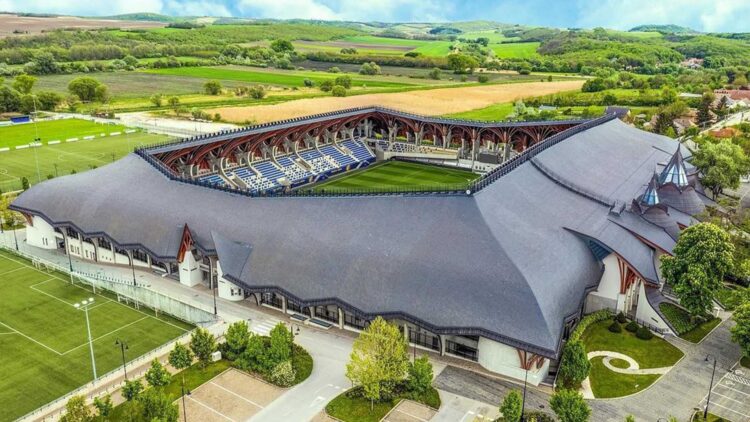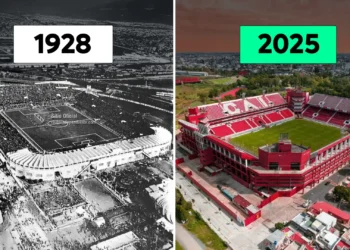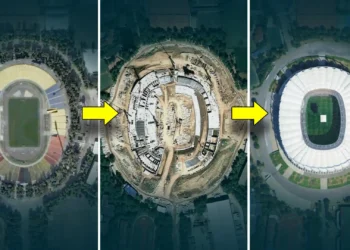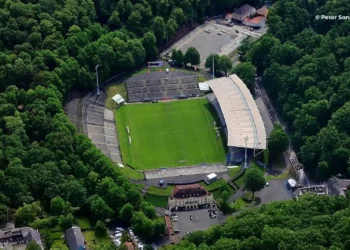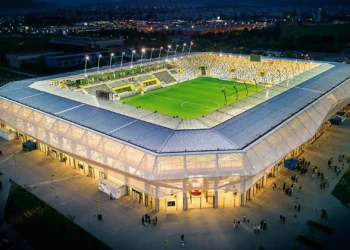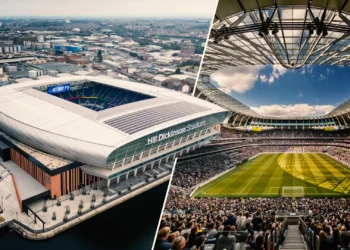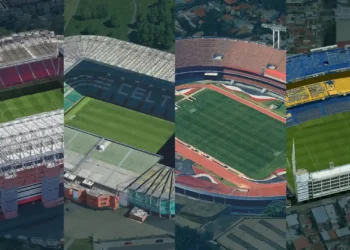Pancho Aréna is a unique football stadium in Europe, this fairytale stadium is located in Felcsút, Hungary. With a capacity of about 3,800 seats, this stadium has gained fame not only for its moderate size, but for its exceptional architectural uniqueness, where the main material used is wood. Designed by renowned Hungarian architect Imre Makovecz, Pancho Aréna represents a harmonious blend between nature and modernism, creating a warm and welcoming atmosphere for sports fans.
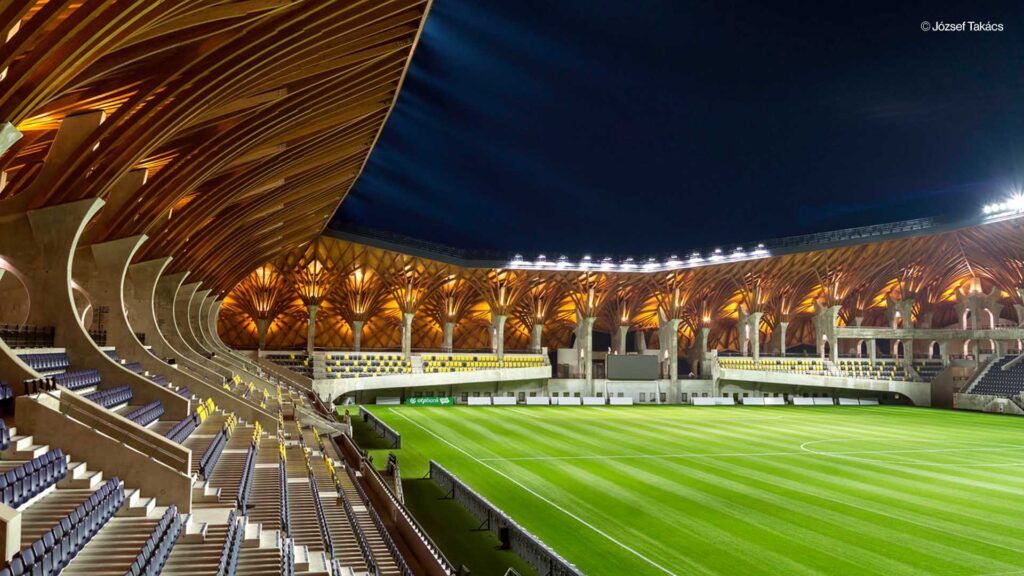
Wood is the main material used in the structure of the Pancho Arena, giving the stadium an organic look and feel, unlike the concrete used in other stadiums. The columns, ceiling and walls of the stadium are crafted from carefully selected wood for strength and durability. This innovative use of wood creates an eco-friendly feel and maintains the natural warmth that wood provides. The stadium’s architecture is influenced by Hungarian folk traditions and traditional wooden constructions, bringing a sense of the nation’s cultural heritage to the sports arena.
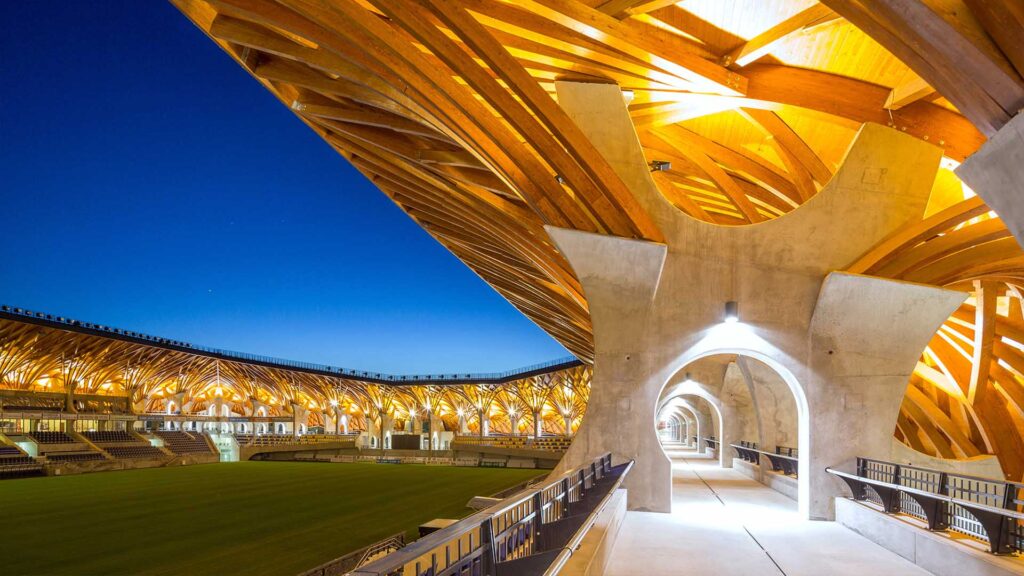
One of the most impressive features of Pancho Arena is its undulating ceiling, which creates organic forms inspired by nature. This structure composed of wooden arches resembles open wings, creating a look that symbolizes hospitality and care. The stadium’s ceilings, forming an elaborate and symmetrical arch, create a sense of spaciousness and inspire architecture admirers. This design not only makes the stadium look beautiful, but improves the acoustics, allowing the voices and sounds of the match to naturally reflect and spread throughout the space.
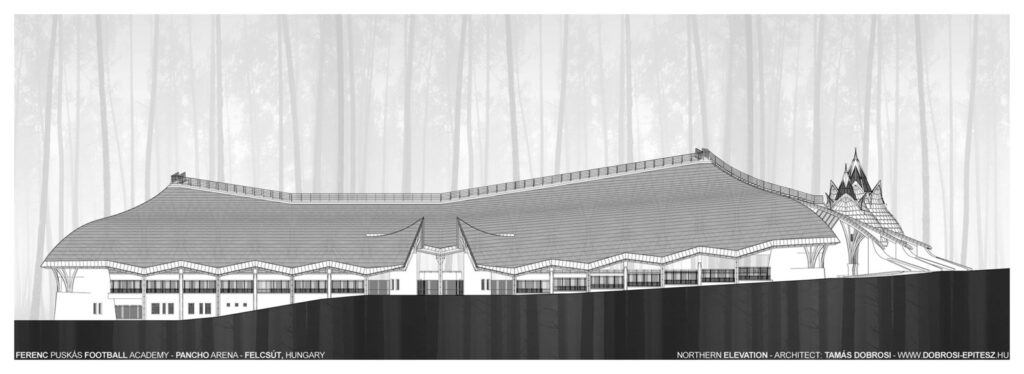
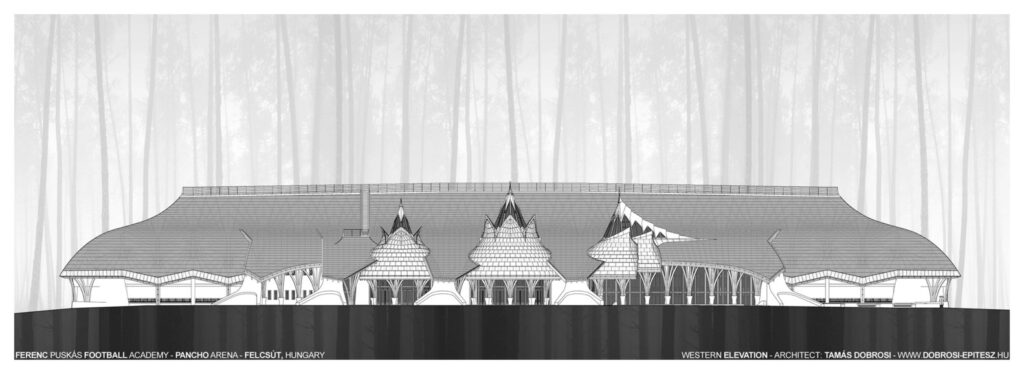
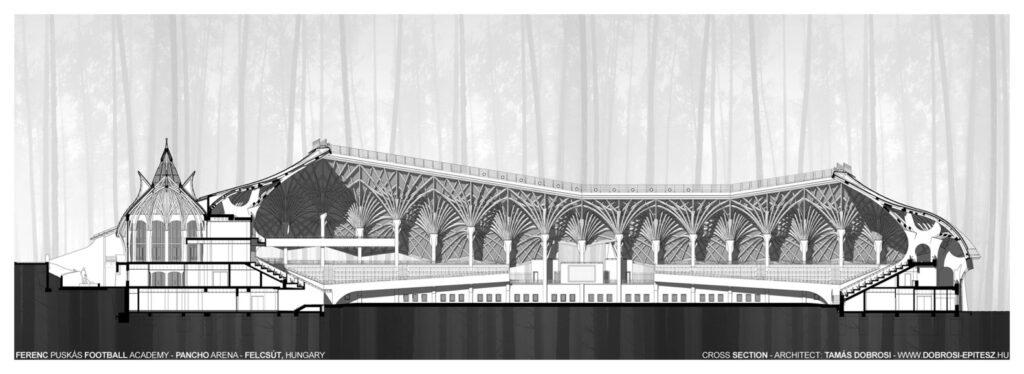
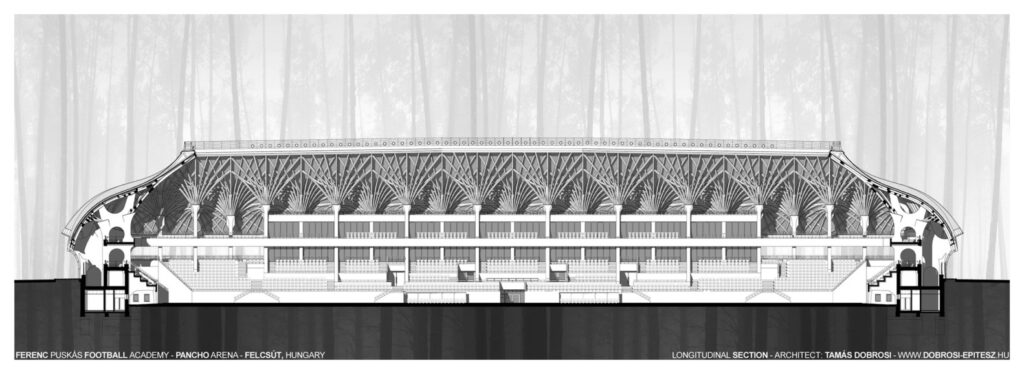
Unlike traditional stadiums, Pancho Aréna uses many windows and open spaces that allow natural light to enter. This smart lighting, combined with the warm colors of the wood, creates a bright and relaxing atmosphere for the viewers. Also, windows in different shapes around the arena allow beautiful views of the surrounding landscape, making the experience of watching the match even more special.
Architect Imre Makovecz, known for incorporating elements of Hungarian culture in his works, has used in this project symbols and forms that represent the cultural identity of the Hungarian people. The design is influenced by organic architecture, a style that Makovecz often used to connect buildings with nature and the national spirit.
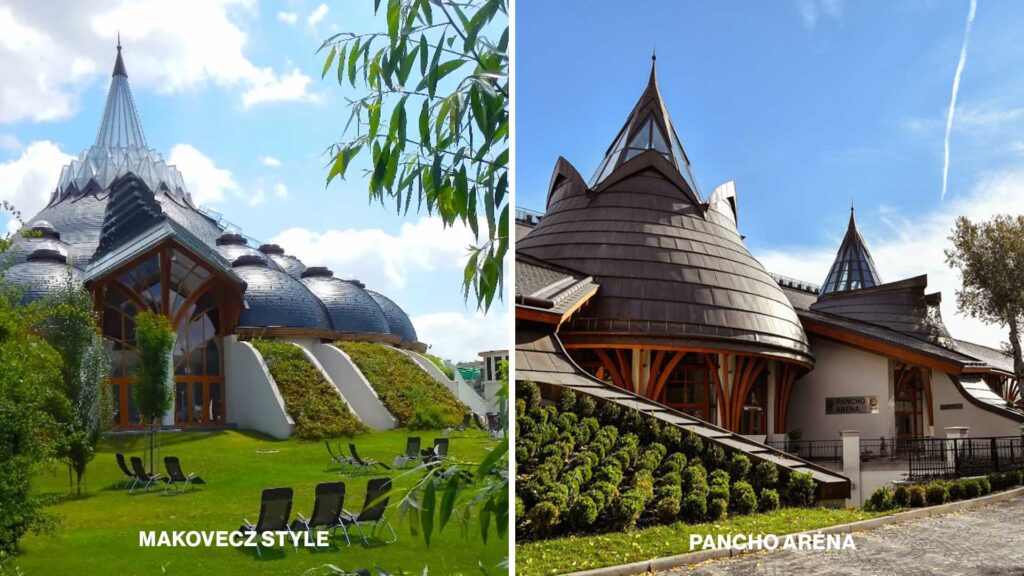
Natural materials, organic design and the integration of Hungarian culture make this stadium a special attraction for tourists and football fans from all over the world. For anyone visiting the Pancho Arena, the experience is a combination of a football match with an architectural wonder that embodies Hungary’s nature and cultural heritage.
